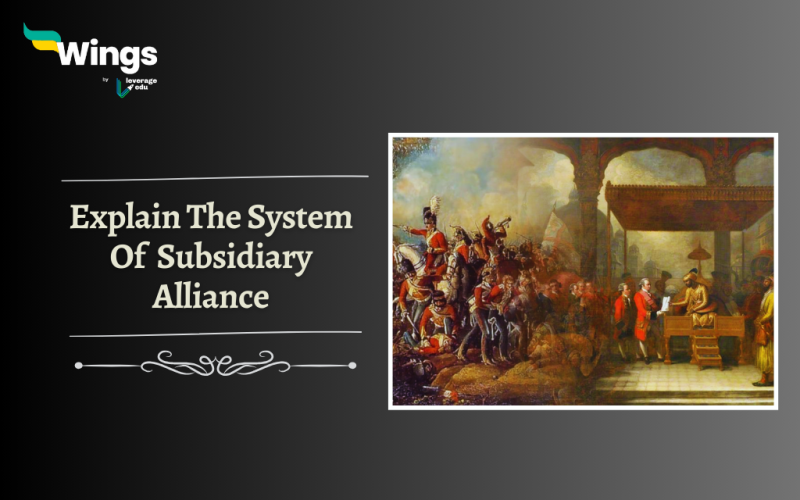The Subsidiary Alliance system was introduced by Lord Wellesley, the Governor-General of India, in the late 18th century. Under this system, the British East India Company would provide military protection to a princely state in exchange for the placement of a British resident in the state’s court. The ruler of the princely state had to accept certain conditions, including not maintaining a separate armed force and not forming alliances with other states without the British Company’s consent. The policy was between the British East India Company and the princely states of India. In this article, we will delve into the intricacies of this historical concept and explore its significance. So, let’s begin to explain the system of subsidiary alliance.
Key Components of the Subsidiary Alliance System
The Components of the Subsidiary Alliance system were –
- Military Support: The British Company would station a contingent of troops in the princely state to ensure its security and protection.
- British Resident: A British resident would be appointed to the court of the princely state to oversee its affairs and ensure compliance with the terms of the alliance.
- Financial Control: The British Company would control the state’s finances, often leading to heavy debts and financial dependency on the Company.
- Loss of Sovereignty: Princely states that entered into a Subsidiary Alliance with the British Company effectively lost their sovereignty and autonomy in matters of defence and foreign policy.
Also Read – Doctrine of Lapse: UPSC Notes, History, Effects
Impacts of the Subsidiary Alliance System
- The Subsidiary Alliance system helped the British Company to establish political dominance over a vast number of princely states in India.
- It started with an alliance with Oudh and then Marathas with the Treaty of Allahabad.
- With control over the finances of the princely states, the British Company was able to exploit their resources and wealth for its own benefit.
- The imposition of the Subsidiary Alliance system led to widespread discontent among the local population, resulting in several uprisings and revolts against British rule.
- Many princely states eventually lost their independence and were either annexed by the British Company or placed under direct British control.

Relevant Blogs
| Cripps Mission | Civil Disobedience Movement in India |
| Tribal Movement in India | Salt Satyagraha Movement |
| Bardoli Satyagraha | Champaran Satyagraha |
| Kheda Satyagraha | What Were the Diwani Rights? |
This blog was to explain the system of Subsidiary Alliance. If you want to read more articles like this, you can get Short notes on the Modern History of India here. Also, you can visit our general knowledge page on Indian History!
 One app for all your study abroad needs
One app for all your study abroad needs













